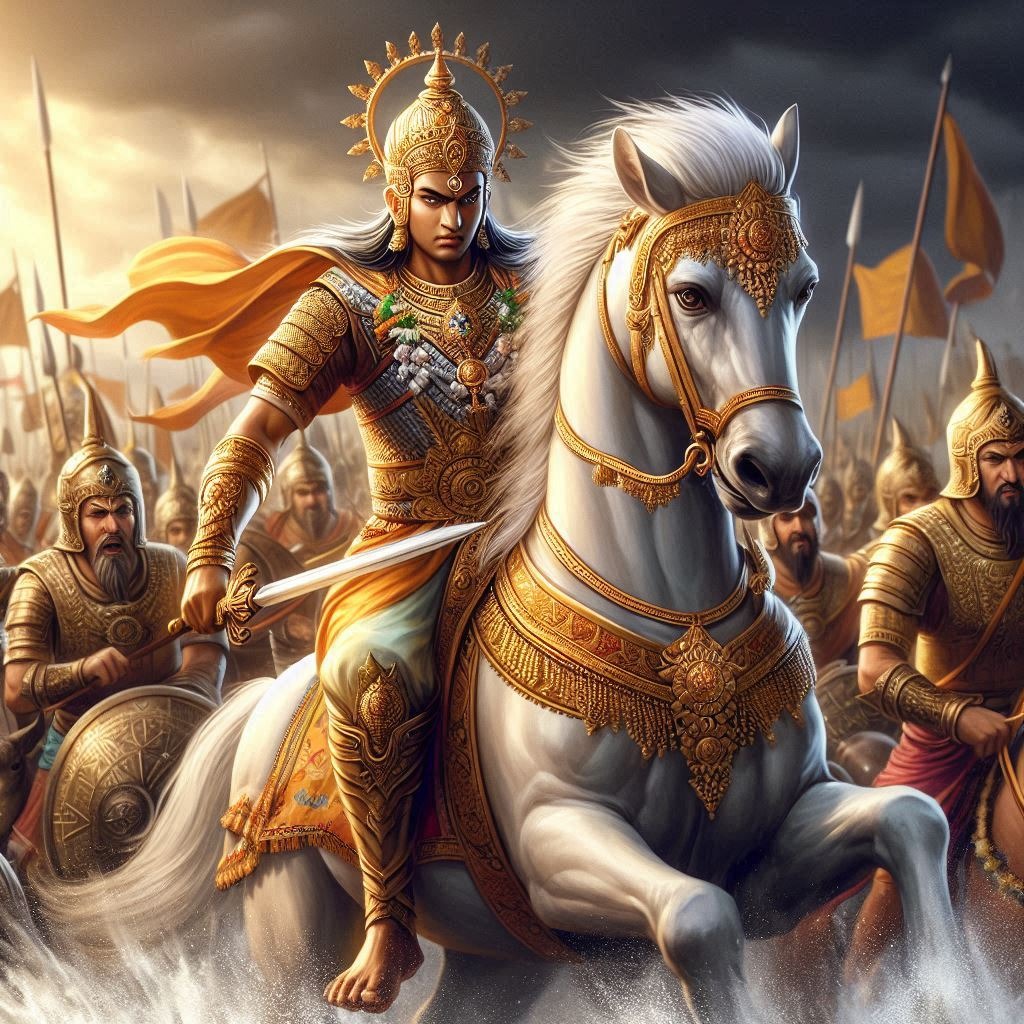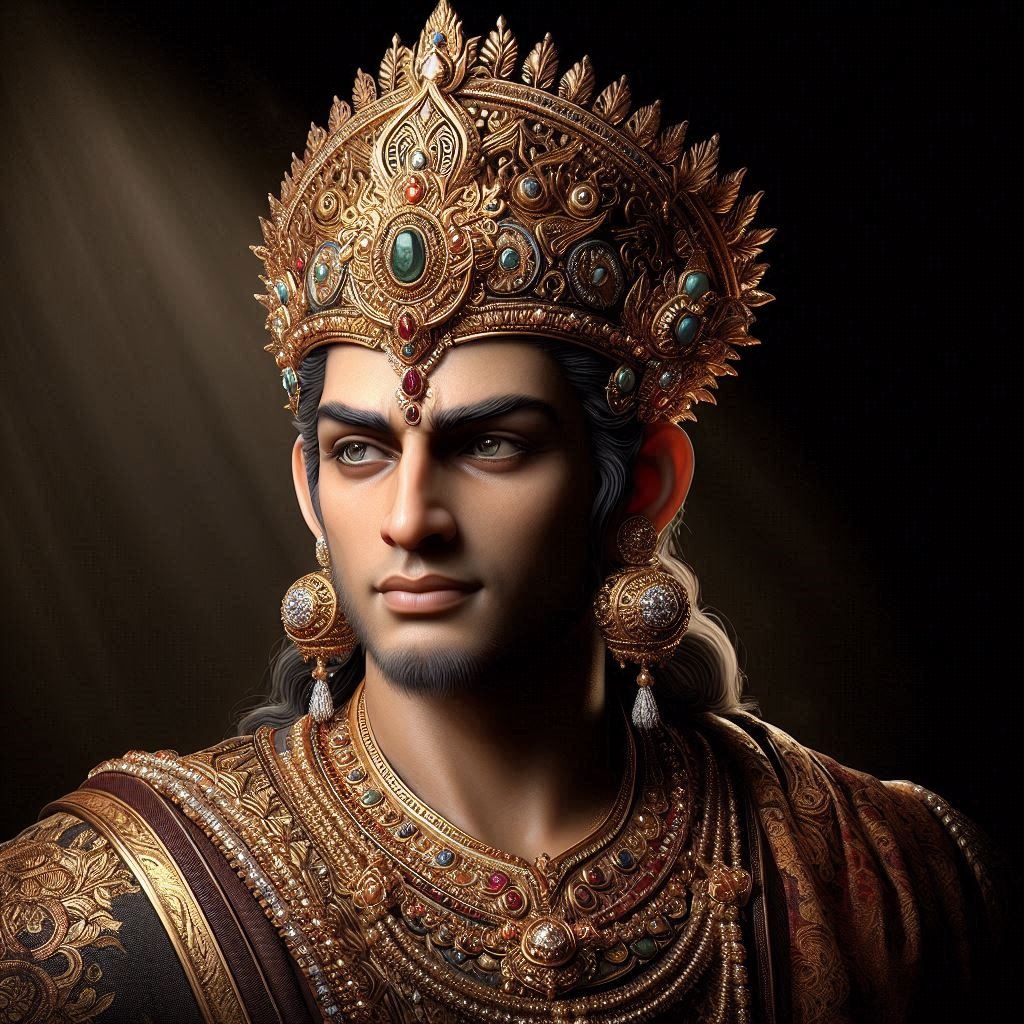Samrat Vikramaditya, often revered as one of the most illustrious and legendary emperors of ancient India, is a name that resonates with tales of valor, wisdom, and cultural patronage. Though historical records about him are sparse and sometimes conflated with mythical narratives, Vikramaditya is widely believed to have ruled from the ancient city of Ujjain, now in the state of Madhya Pradesh. His reign is celebrated for establishing the Vikram Samvat calendar, still used in parts of India and Nepal. Vikramaditya’s court was reputedly adorned with the Navaratnas, nine jewels of wisdom, including luminaries such as the poet Kalidasa and the astronomer Varahamihira. His legacy is immortalized in numerous folk tales, especially the “Vikram and Betal” series, which highlight his acumen and justice. As a figure who bridges history and legend, Vikramaditya remains a symbol of an ideal monarch in Indian cultural memory.
Early Life and Background of Vikramaditya
The early life of Samrat Vikramaditya, though enveloped in legend, is believed to have been deeply rooted in the rich cultural and scholarly traditions of ancient India. Born in Ujjain, Madhya Pradesh, his upbringing was influenced by a lineage of wise and valorous ancestors. Legends suggest that he was a prodigious child, displaying signs of exceptional intellect and leadership from a young age. The historical backdrop of Vikramaditya’s life is set against the backdrop of a flourishing Gupta Empire, which is often associated with the golden age of Indian culture, science, and political stability. This environment nurtured his abilities and prepared him for his future role as a monarch. Mentored by some of the most learned scholars of his time, Vikramaditya was well-versed in various disciplines, including statecraft, philosophy, and the arts. This diverse and robust education laid the foundation for his illustrious reign, marked by remarkable achievements in administration, military conquest, and cultural patronage.
The Reign of Samrat Vikramaditya: Key Achievements
The reign of Samrat Vikramaditya is marked by numerous achievements that solidified his legacy as a wise and just ruler. Known for his military prowess, Vikramaditya successfully expanded his kingdom through strategic conquests, ensuring peace and stability within his realm. His administrative reforms were pioneering, focusing on efficient governance, justice, and welfare of his subjects. One of his most enduring contributions is the establishment of the Vikram Samvat calendar, which continues to be used in parts of India and Nepal. Vikramaditya’s court became a cultural hub, renowned for its assembly of the Navaratnas, or nine jewels, which included eminent scholars, poets, and scientists like Kalidasa, Varahamihira, and Amarasimha. These intellectuals thrived under his patronage, contributing to a golden age of literature, astronomy, and the arts. Vikramaditya’s reign is celebrated not only for its political and military successes but also for fostering an environment where knowledge and culture flourished, leaving an indelible mark on Indian history.

The Legend of Vikramaditya and the Vikram Samvat Calendar
The legend of Vikramaditya is intricately linked to the creation of the Vikram Samvat calendar, which is a lunisolar calendar still in use in parts of India and Nepal. According to folklore, Vikramaditya established this calendar to commemorate his victory over the Sakas in 57 BCE, marking the beginning of an era of prosperity and justice. The Vikram Samvat calendar is significant for its cultural and historical importance, aligning with numerous Hindu festivals and rituals. The calendar’s creation showcases Vikramaditya’s influence beyond governance, extending into the realms of cultural and religious practices. This act of instituting a new era further cements his legacy as a ruler who deeply impacted the cultural fabric of his time.
The Nine Gems (Navaratnas) of Vikramaditya's Court
The Nine Gems, or Navaratnas, of Vikramaditya’s court were an illustrious group of scholars and artists who contributed to a golden age of intellectual and cultural prosperity. This esteemed assembly included luminaries like the legendary poet Kalidasa, the brilliant astronomer Varahamihira, and the celebrated lexicographer Amarasimha. These scholars excelled in various fields such as literature, science, and the arts, producing works that have endured through the centuries. Under Vikramaditya’s patronage, their collective brilliance fostered an environment of creativity and learning, cementing his court’s reputation as a beacon of wisdom and cultural achievement.
Stories and Folklore Surrounding Vikramaditya
Samrat Vikramaditya’s legacy is enriched by a tapestry of stories and folklore that celebrate his wisdom and valor. One of the most famous is the “Vikram and Betal” series, a collection of tales where Vikramaditya, portrayed as an intrepid king, confronts the clever ghost Betal. Each story, filled with moral dilemmas and profound questions, showcases Vikramaditya’s astuteness and sense of justice. Additionally, legends like “Simhasana Dvatrimsika,” or the “32 Tales of the Throne,” recount the virtues of Vikramaditya through narratives of his mythical throne. These stories have transcended generations, cementing Vikramaditya’s place in Indian cultural lore as the epitome of an ideal king.
Historical Debates: The Identity and Timeline of Vikramaditya
The identity and timeline of Samrat Vikramaditya are subjects of considerable historical debate, with scholars divided over his precise historical context. Some historians identify him with Chandragupta II of the Gupta Empire, who ruled during the 4th and 5th centuries CE. This association is based on the similarities in their achievements, such as military conquests and cultural patronage. However, other scholars suggest that Vikramaditya is a composite figure, amalgamating the deeds of multiple rulers into a single legendary persona. Additionally, the exact timeline of Vikramaditya’s reign is contentious, with traditional accounts placing him around 57 BCE, correlating with the establishment of the Vikram Samvat calendar. This discrepancy between historical records and folklore complicates efforts to pinpoint his true identity and reign. The lack of concrete archaeological evidence further fuels these debates. Despite these uncertainties, the legend of Vikramaditya continues to be a significant cultural symbol, representing an idealized vision of kingship in Indian history.
Vikramaditya's Legacy in Modern India
Vikramaditya’s legacy in modern India endures through cultural, historical, and educational channels. The Vikram Samvat calendar, initiated by him, is still used in many regions, underscoring his impact on Indian chronology. His stories, especially “Vikram and Betal,” remain popular in literature, television, and folklore, perpetuating his image as a wise and just ruler. Educational curricula often highlight his reign, emphasizing his contributions to art, science, and governance. Festivals and local traditions in Ujjain celebrate his memory, reflecting his lasting influence. Vikramaditya symbolizes ideal kingship, inspiring contemporary values of justice, wisdom, and cultural patronage.
Samrat Vikramaditya’s life and reign are emblematic of a golden era in ancient India. His contributions to culture, governance, and the arts have left an indelible mark on history, making him a figure of enduring admiration and respect.



woh I enjoy your articles, saved to fav! .